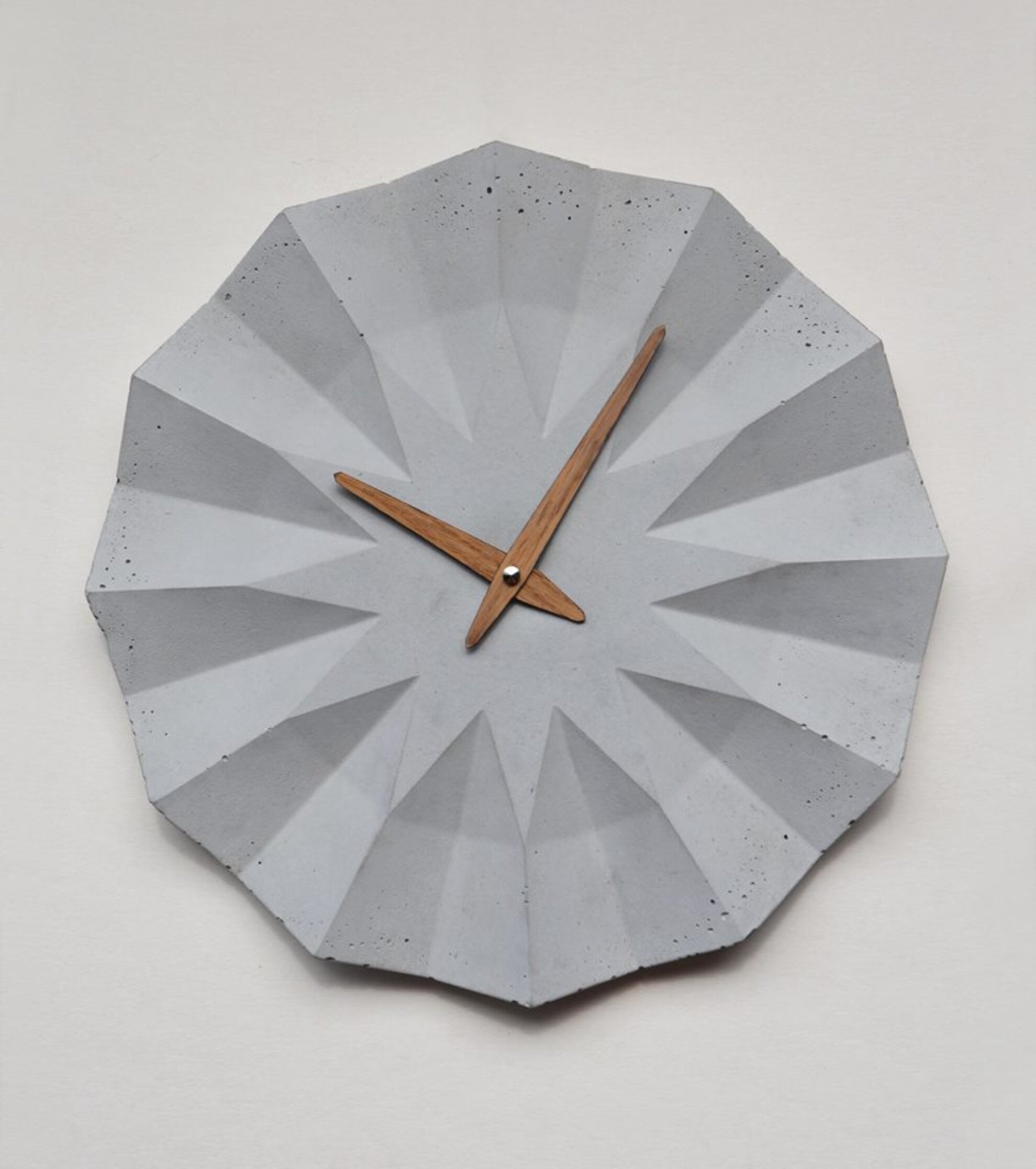Tiny painted earrings, extraordinary lamps, heavy-duty kitchen accessories, outdoor furniture, clocks – these are just a few examples of what can be made with concrete, an omnipresent material that we all take for granted, but which is now enjoying a creative renaissance in the hands of savvy designers. Here are six Hungarian brands that are pushing the boundaries of concrete’s use, with surprisingly intriguing results.

This design team gained a lot of publicity for their concrete innovations. Its founders are happy to experiment with the creation of various cement textures – from rustically porous to finely polished – and in addition to concrete, they often use metal, textiles, and sometimes even wood. Their self-designed and manufactured products include various clocks, a necklace collection, practical wine stoppers, and a ceiling lamp – among others. Our favorite is the beautifully shaped Blub lamp with a brass neck portion, which is available with eco-friendly LED bulbs and textile cables of various colors and textures. Our other favorite is the large Polygon clock, with a prominent, polygonal surface that not only shows the time, but also displays unique character.
- Available at: the brand’s own workshop, MÜSZI, DrumDrum design, Le petit design, Magma+ Hungarian Art&Design, MONO art & design, SCHATZI; webshops: classhome.hu, nekednekem.hu
- Prices: desk clock 10,000 HUF, wine stopper 3,000 HUF, wall clock 16,000 HUF, ceiling lamp 29,000 HUF, necklace 7,000 HUF (prices may differ depending on the distributor)

In 2012, Anita Boldog decided to establish an independent brand of her own. Although she graduated as a porcelain designer, she became acquainted with concrete during a workshop, and took a liking to it so much that now it’s the only material she works with. Over the years, she’s been developing her experience and the brand as well, with the purpose of disproving stereotypes about concrete. Her portfolio includes small cufflinks, photo holders, candleholders, shelves, coat racks, flowerpots, and even household fixtures weighing several hundred kilograms. The designer has already put together a professional production team, so in addition to her own products, she also takes custom orders – including the designing of special, personalized gifts within the frameworks of corporate partnerships.
- Available at: Bite Sized Budapest, Black Box Concept Store, Lollipop Factory,
- Prices: picture frame 12,500-17,500 HUF, candleholder 6,000 HUF, shelf 31,000 HUF, shelf + two hangers: 38,000 HUF

Zsófia Weidinger started making jewelry less than a year ago, although her affection towards concrete dates back to her childhood days, as her father worked in the construction industry. Her pieces are simple with basic forms: circles, rectangles, squares, and triangles, decorated by asymmetrical lines and surfaces of gold or silver paint. She’s especially drawn to the beauty of raw concrete, so she doesn’t polish her jewelry too much, but instead lets the porous, sometimes uneven surface of the material prevail, which also results in a stronger contrast with the metallic paint. In early March, the brand will launch a new collection called Monochrome.
- Available at: Le petit design,
- Prices: 3,400-8,900 HUF

Two architecture students – Zsófia Jakab and Attila Horváth – approach concrete from a more technological perspective, and their working method is similar to architectural design, as well. They put serious emphasis on the designing process, and create casting templates, frames, prototypes, and often even 3D-printed models before creating the object as an actual product. In our opinion, Monge’s most exciting and user-friendly product is the Opticube lamp, which “channels” the light to the cube’s surface through optical fibers. The mood lamp provides a light similar to the starry sky in the dark, but the reason we like it so much is that it can be used at wet places and outdoors, since the electronics are sealed inside the cube.

By education, Nóri is an architect, with the goal of offering an alternative in decorating our environment with her self-designed objects. In addition to design, her other passion is gastronomy, which she is engaged with as a blogger and co-owner of a pizzeria. For her, the presentation of food is just as important as its quality, so it’s no surprise that she designed her own tableware collection. The handmade pieces are beautiful by themselves, but become the most spectacular while in use. The flat, polygonal dark-gray plates and gradually deepening bowls make the food come to life, and there is no table on which they wouldn’t look good.
- Available at: The Garden Studio,
- Prices: 6,500-11,200 HUF





